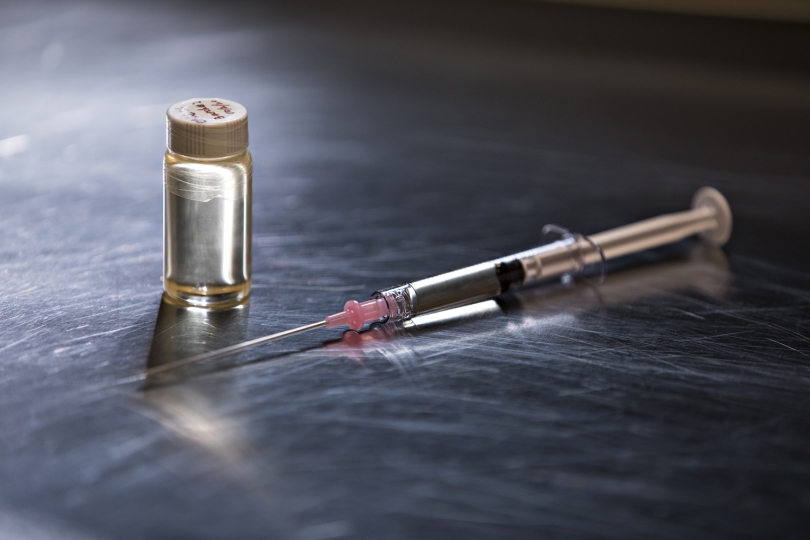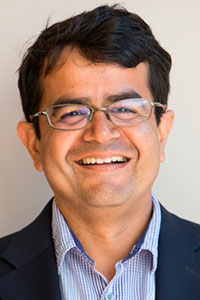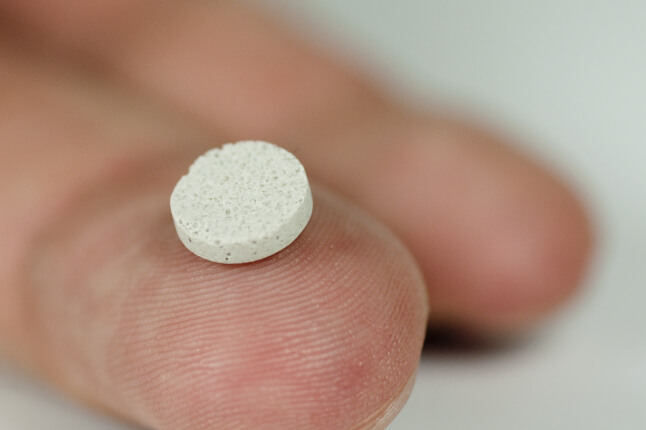News
This ionic liquid formulation can uniformly deliver chemotherapy to tumors while destroying cancerous tissue in preclinical studies (Image courtesy of the Mayo Clinic)
A research team led by Samir Mitragotri, the Hiller Professor of Bioengineering and Hansjorg Wyss Professor of Biologically Inspired Engineering at the Harvard John A. Paulson School of Engineering and Applied Sciences (SEAS) and Rahmi Oklu, of the Mayo Clinic, report the development of a new ionic liquid formulation that killed cancer cells and allowed uniform distribution of a chemotherapy drug into liver tumors and other solid tumors in the lab. This discovery could solve a problem that has long plagued drug delivery to tumors and provide new hope to patients with liver cancer awaiting a liver transplant.
The preclinical study results are published in Science Translational Medicine.
Uniform drug delivery to tumors is often riddled with challenges. Higher drug doses are often used to encourage drug delivery into the tumor, and these higher doses could lead to significant toxicity.
"If the drug cannot penetrate the tumor and remain there, then it cannot do its job," said Oklu, the director of Mayo Clinic’s Minimally Invasive Therapeutics Laboratory.
Current treatment involves ablation, which involves heating or cooling the tumor or infusing radioactive particles into the arteries of the tumor to destroy the cancer cells and keep patients within the criteria for a transplant.
"You could do a microwave ablation and basically burn the tumor, but that is often not an option if the tumor is close to the heart or other important structures. And sometimes it is hard to find the blood supply of the tumor to infuse the radioactive particles," said Oklu.
The research team developed an ionic liquid — essentially salt in a liquid state — as an alternative way to deliver drugs into tumors through an ultrasound-guided needle injection. Once injected, the ionic liquid deposited the chemotherapy drugs uniformly, killing the cancer cells as the liquid engulfed the tumors.
Mitragotri and his lab have been pioneering the use of ionic liquids for all kinds of treatment applications, including as a way to deliver insulin by skin patches and pills, as nanoparticle coatings for targeted delivery, as vaccine adjuvants, and as a way to deliver therapeutics to treat psoriasis.
“Ionic liquids are an exceptionally versatile group of materials,” said Mitragotri. “In our lab, we have already demonstrated that they have the ability to overcome a variety of biological barriers within the body for delivering drugs. In this study, we demonstrate a novel application of ionic liquids to deliver chemotherapeutic drugs in the liver tumor.”
The researchers reported this approach was successful in preclinical studies using freshly resected human tumors in the lab and liver tumors in animal models. In addition, the authors reported that the chemotherapy remained in the targeted zone for the length of the 28-day trial.
Whereas drugs often wash away quickly from direct injection into tumors or from standard IV delivery of chemotherapy through the veins of the arm, the ionic liquid, which the authors call a "locally active agent for tumor treatment and eradication," or LATTE, also encouraged immune cell infiltration in the microenvironment of the tumor. This may play a role in achieving immunotherapy in solid tumors. The researchers say this could solve current challenges, especially in hepatocellular carcinoma ― the most common form of liver cancer ― where liver transplant can be curative.
The authors suggest that LATTE may work via diverse methods, and future studies are planned to expand on these preclinical findings. Future efforts might examine additional chemotherapy drugs, effects of immunotherapy agents and effects on overall survival, and involve a detailed analysis of local and body-wide immune implications of this experimental intervention.
“This has been a very exciting collaboration,” said Mitrigotri. “Our lab focuses on chemistry, material science and engineering aspects of ionic liquids. This collaborative study with interventional radiologist Dr. Oklu’s lab at Mayo Clinic has enabled us to demonstrate a novel application of these amazing materials.”
In addition to Oklu, Mayo Clinic authors include lead author Hassan Albadawi, Zefu Zhang, Izzet Altun, Jingjie Hu, and Leila Jamal. In addition to Mitragotri, authors from Harvard University are Kelly Ibsen, and Eden Tanner.
This study was funded by the National Institutes of Health.
Topics: Bioengineering, Health / Medicine
Cutting-edge science delivered direct to your inbox.
Join the Harvard SEAS mailing list.
Scientist Profiles
Samir Mitragotri
Hiller Professor of Bioengineering and Hansjorg Wyss Professor of Biologically Inspired Engineering
Press Contact
Leah Burrows | 617-496-1351 | lburrows@seas.harvard.edu




